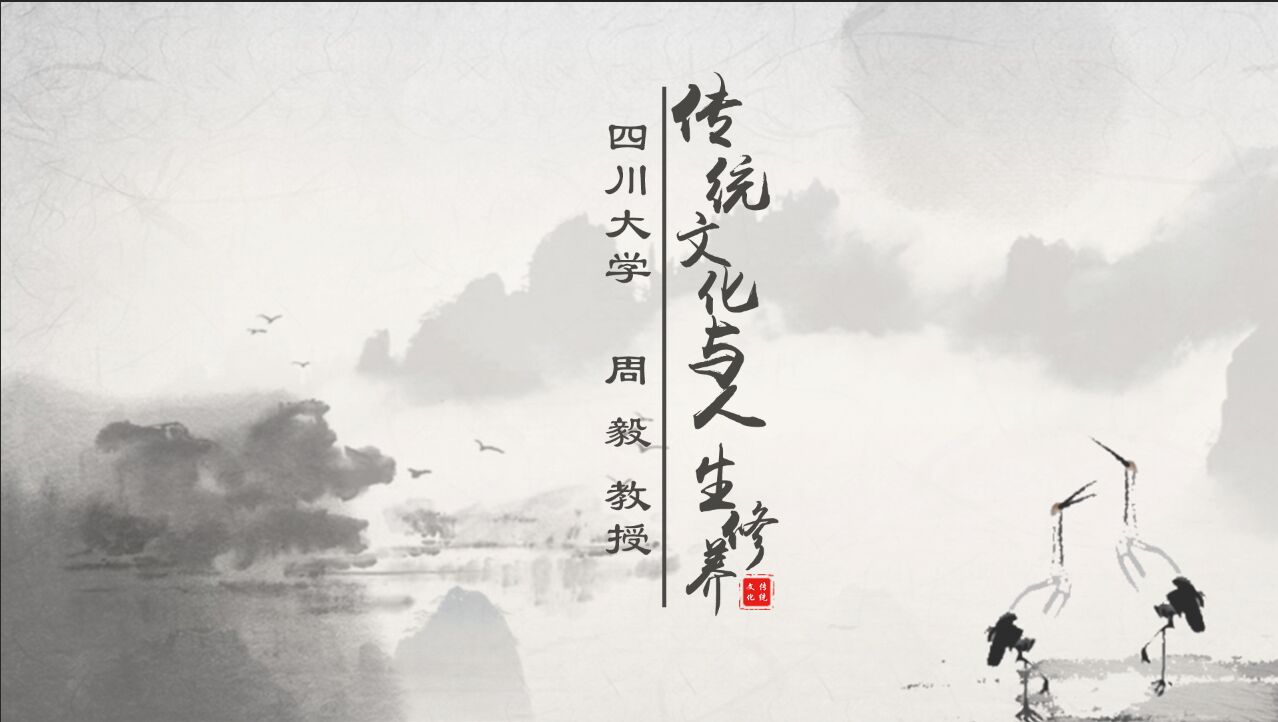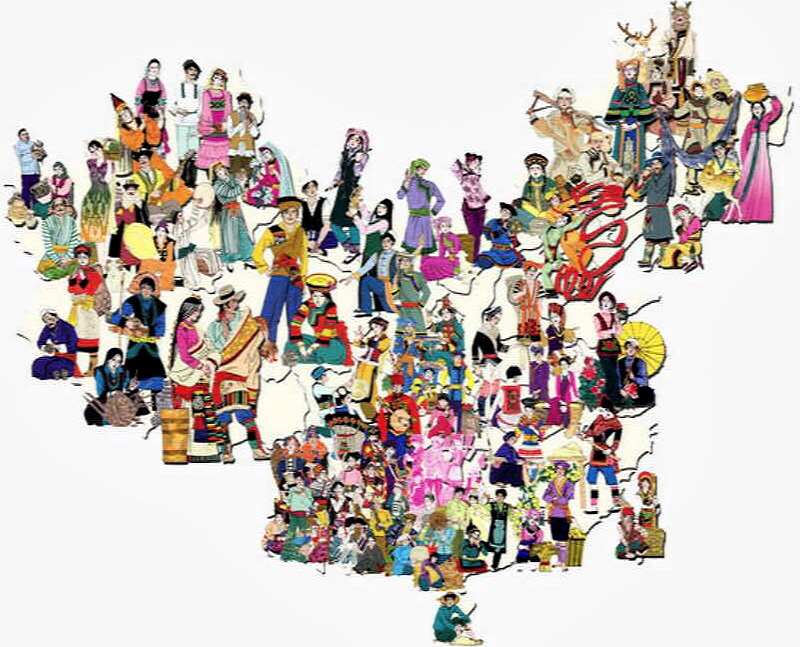
当前课程知识点:Culture and Tourism > Week 2: Mixed Heritage and Cultural Heritage Categories > 2.1 Mixed Culture and Natural Heritage > 2.1.1 Mixed heritage operational guidelines and cases (1)
返回《Culture and Tourism》慕课在线视频课程列表
返回《Culture and Tourism》慕课在线视频列表
在这一节中,我将把它分为两部分。
第一部分,我将讨论混合遗产的概念。
第二部分,我要讲一个重要的概念我们称之为文化景观。
在我谈论文化景观之前,
我还要强调另一种类型的遗产资源。
是混合文化和自然遗产。
操作指南中将混合遗产定义
为满足《公约》第1条和第2条规定的
文化和自然遗产的部分或全部定义的财产。
你可以从第46段的操作类型中看到。
我想强调的一个例子是泰山。
它离北京不远,
在所有六个标准中都被提名,这太棒了。
不仅是六个标准,还有第七个标准。
神圣的泰山(“Mountain”的意思是“山”)
是近2000年来一直是帝王崇拜的对象,
在那里发现的艺术杰作与自然景观非常和谐。
它一直是中国艺术家和学者的灵感源泉,
象征着中国古代文明和信仰。
我只是想一个标准一个标准地复习一下,
因为这是一个很好的例子,
复习一下我们已经学过的标准。
标准一代表一个有天才般的杰作。
泰山景观作为中国传统五大神山之一,
是一项独特的艺术成就,
风景优美,
经过2000多年的进化
人类有史以来最伟大的成就之一。
标准(二),泰山是中国最受尊崇的山,
2000多年来,泰山对艺术的发展产生了多方面、广泛的影响。
一座承载着人类痕迹的山的概念模型,
其优雅的结构——桥梁、门户或亭台,
暗淡的松树林或可怕的岩石悬崖形成对比,
只能从泰山开始。
标准(三),泰山是中华帝国是独特的见证,
是中国古代失落文明的见证,
尤其是在宗教、艺术和文学方面。
两千年来,它是主要的军舰宫殿之一,
皇帝,作为上天之子,
在亲自主持的封禅祭品中向天地致敬。
标准(四):泰山是圣山的典范。
天佑宫(公元1008年)位于泰山庙内,
位于泰山庙内,是中国最古老的三座宫殿之一。
标准(v):泰山的自然和文化的整体
包括一个传统的人类聚落,它是一个可以追溯到
古代的宗教中心的形式,
它已经成为传统文化的一个突出的例子,在不可逆转的变化影响下,
增加了参观和旅游。
然后是标准(vi):泰山与那些在世界历史上
重要、且不容小视的事件有着直接而具体的联系。
这些包括儒家思想的出现,中国的统一,
以及中国的文字和文学的出现。
以及中国文学写作的出现。
然后是依据(vii):经过近30亿年的自然演化,
泰山是通过复杂的地质和生物过程形成的,
在周围的高原上形成了一个巨大的岩体,
上面覆盖着茂密的植被。
这座雄伟壮观的山
是美丽的自然景观的杰出结合,
受人类数千年使用的文化影响。
这就是关于泰山的七项标准。
中国有四大世界自然与文化交融之地。
黄山、泰山、武夷山、峨眉山。
另一个例子是黄山。
黄山于1990年被列入世界遗产名录。
黄山被称为“中国最可爱的山”,
在中国历史上的很长一段时间里,它通过艺术和文学被赞誉。
如今,它对前来朝拜的游客、诗人、画家和摄影师
有着同样的吸引力。
这里因为由许多花岗岩山峰和云海中显露出来的岩石
构成的壮丽景色而闻名。
它是基于文化标准二,
黄山风景的文化价值首次被植入
中国人的想象是在唐代,并一直受到高度尊重。
公元747年,皇令将黄山定名为黄山,
从此吸引了许多游客,包括隐士、诗人和画家,
他们通过绘画和诗歌来歌颂黄山鼓舞人心的景色,
创造了丰富的具有全球意义的艺术和文学作品。
到了明代,黄山已经成为中国山水画家最喜爱的题材,
并由此形成了影响深远的山水画派。
在这个风景优美的地方展示人与自然的互动,
激发了几代中国艺术家和作家的灵感。
其次是依据(vii)标准:黄山以其壮丽的自然景观而闻名,
其中包括巨大的花岗岩巨石
和古老的松树,这些常常被云和雾的效果进一步增强。
这一引人注目的景观包括由天然石柱、
奇形怪状的岩石、瀑布、洞穴、湖泊和温泉组成的结构,
这些都是由其复杂的地质历史形成的。
黄山也是以第十项标准为基础的,
因为它为一些地方或国家特有的植物物种提供了栖息地,
其中一些在全球受到威胁。
另一个例子是峨眉山风景区,包括乐山大佛风景区。
中国的佛寺建于公元1世纪的四川省,
坐落在美丽的峨眉山上。
其他寺庙的加入使该地区成为佛教最神圣的地方之一。
几个世纪以来,文化宝藏的数量不断增加。
其中最引人注目的是乐山大佛,
它是8世纪在山坡上雕刻而成,俯瞰着三条河流的汇合处。
它高71米,是世界上最大的佛像。
峨眉山也因其异常多样的植被而闻名。
有些树已经有1000多年的历史了。
在这一部分中,我识别了什么是混合遗产,并给出了三个例子,泰山,
黄山和峨眉山,乐山大佛遗址。
下一部分,我将讨论一个重要的问题,文化景观。
-1.1 Introduction course outline and UNESCO World Heritage Program
--1.1.1 Introduction of culture and tourism course outline
--1.1.2 Introduction of UNESCO World Heritage Program(1)
--1.1.3 Introduction of UNESCO World Heritage Program(2)
-1.2 Cultural Heritage-1
--1.2.1 The meaning of culture heritage
--1.2.2 Criterion(i): masterpiece of human creative genius
--1.2.3 Criterion(ii): exhibit important interchange of human value
--1.2.4 Criterion(iii): bear a unique or at least exceptional testimony
--How can the public understand the importance of heritage?
-1.3 Cultural Heritage-2
--1.3.1 Criterion(iv): an outstanding example in human history
--1.3.2 Criterion(v): represent a culture or human interaction with environment
--1.3.3 Criterion(vi): associated with living traditions of outstanding universal significance
-1.4 Natural Heritage
--1.4.1 Natural heritage features, formations and criterions
--1.4.2 Cases studies of natural heritage
--Cultural landscape meanings: The case of West Lake, Hangzhou, China
--How to access heritage of your hometown?
-2.1 Mixed Culture and Natural Heritage
--2.1.1 Mixed heritage operational guidelines and cases (1)
--2.1.2 Mixed heritage operational guidelines and cases (2)
--2.1.3 Mixed heritage operational guidelines and cases(3)
-2.2 Authenticity, Integrity and Cultural Routes
--2.2.1 How to determine authenticity and integrity
--2.2.2 Heritage routes and heritage canals (1)
--2.2.3 Heritage routes and heritage canals (2)
--What do you think about cultural heritage categories?
-2.3 Special Heritage and Sustainable
--2.3.1 Physical remains of the history of technology and industry
--2.3.2 Transboundary Heritage, Serial Heritage, Serial/Transnational Heritage
--2.3.3 Intangible cultural heritage
--2.3.4 UNESCO World Heritage and Sustainable Tourism Programme
--Recovering the Memory of Ourselves for the Sustainable Cites
--Week 2 quiz
--What do you think about cultural heritage categories?
-3.1 The Australia’s Heritage System and Sydney Opera House
--3.1.1 The Australian Heritage System
--3.1.2 Case Study: The Sydney Opera House
-3.2 Role of the ISCCL and Cultural Landscape (1)
--3.2.2 Uluru-Kata Tjuta National Park
--3.2.3 Honghe Hani Rice Terraces
-3.3 Role of the ISCCL and Cultural Landscape (2)
--3.3.1 West Lake cultural landscape (1)
--3.3.2 West Lake cultural landscape (2)
-3.4 Rural Landscapes as Heritage
--3.4.1 ISCCL Principles Concerning Rural Landscapes as Heritage
-3.5 Case Study: Mongolian Altai
--3.5.1 Nature Culture Integration & the Mongolian Altai(1)
--3.5.2 Nature Culture Integration & the Mongolian Altai(2)
--Week 3 quiz
--Discussion: What do you think is the role of ISCCL?
-4.1 Introduction of the Meaning of 'landscape’
--4.1.1 Brief introduction of landscape and culture
--4.1.2 The conceptual framework of cultural landscape
-4.2 Landscape Values
--4.2.1 The word “landscape” itself and differences in Western, Eastern
--4.2.2 Cultural significance for heritage source
--Discussion: What do you think the cultural landscape attracts you?
-4.3 Reading the Landscape: Identification and Assessment
--4.3.1 Planning model for heritage conservation management policy
--4.3.2 Cultural landscape resources evaluation steps
--Article: Cultural mapping: Intangible values and engaging with communities with some reference to As
-4.4 Case Study: Wingecarribee Historic Landscape
--4.4.1 Case study:Wingecarribee historic landscape study(1)
--4.4.2 Case study:Wingecarribee historic landscape study(2)
--Week 4 quiz
--Discussion: What should we do to strengthen the protection of cultural landscape?
-5.1 Indigenous Tourism
--5.1.1 Indigenous tourism background
--5.1.2 World heritage and indigenous peoples
--5.1.3 Tourism issues at Canadian indigenous world heritage sites
--Discussion: What challenges indigenous World Heritage faces?
--Article: State conceptions of indigenous tourism in Chile
-5.2 Case Study and Conclusion: Great Expectations for Tourism
--5.2.1 Case study Pimachiowin Aki
--5.2.2 Conclusions:Great Expectations for Tourism
--Disussion: Do you have any experience of indigenous tourism?
--Week 5 quiz
-6.1 The Definition of Heritage in Heritage Performance Study
--6.1.1 The definition of heritage in heritage performance study
--6.1.2 Heritage performance and meaning making
--6.1.3 Two key issues emerging from qualitative study
-6.2 Heritage Performance - Evidence from Australia, England and USA
--6.2.1 Heritage performance - reinforcement
--6.2.2 Heritage Performance - inter-generational communication and social values
--6.2.3 Heritage performance - recognition and respect
--6.2.4 Heritage performance - education
--Article:Theorizing museum and heritage visiting
-6.3 The Conclusion of Heritage Performance
--6.3 The conclusion of heritage performance
--Week 6 quiz
--Discussion: What kinds of heritage performances have you learned in this week?



